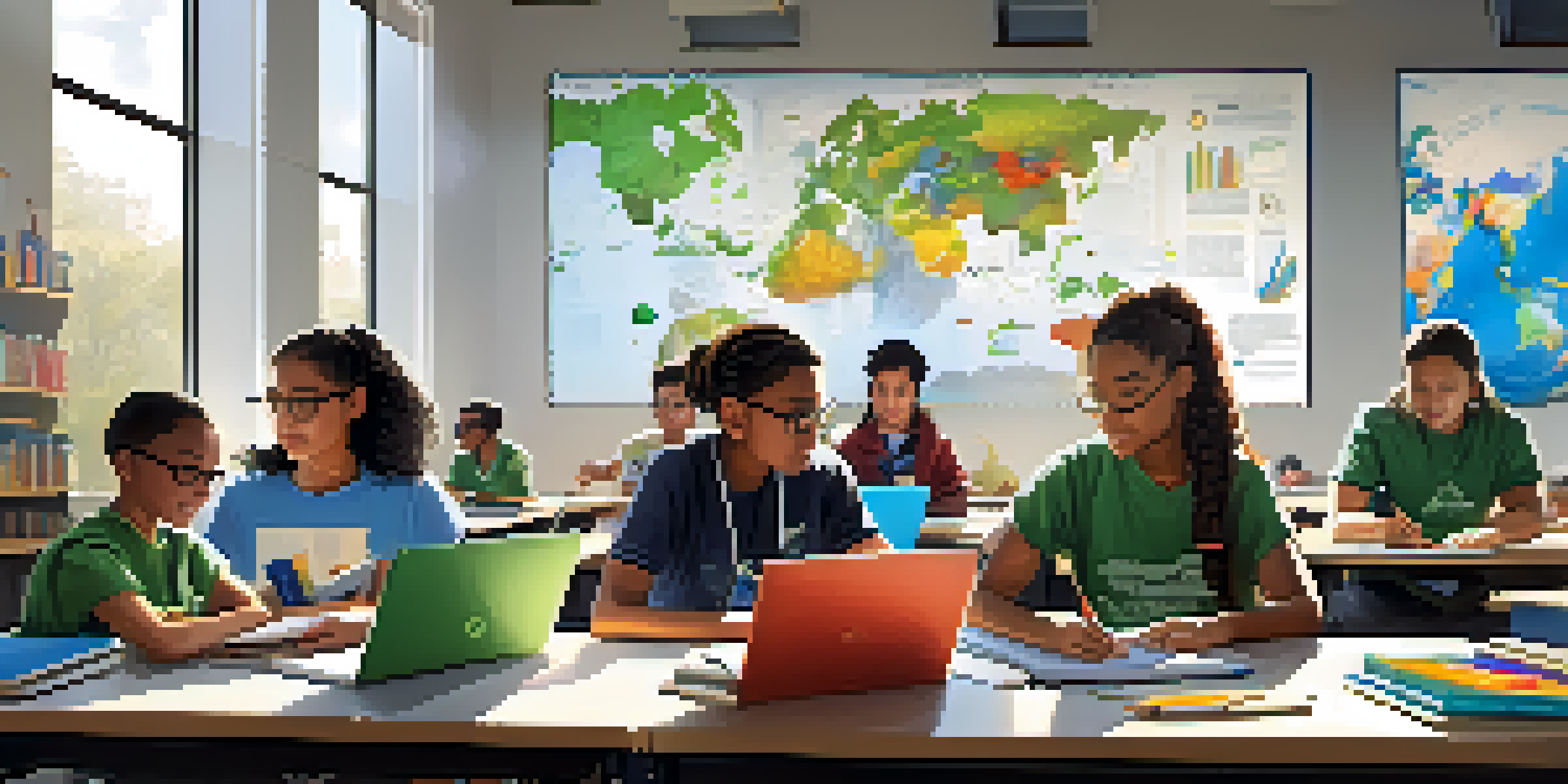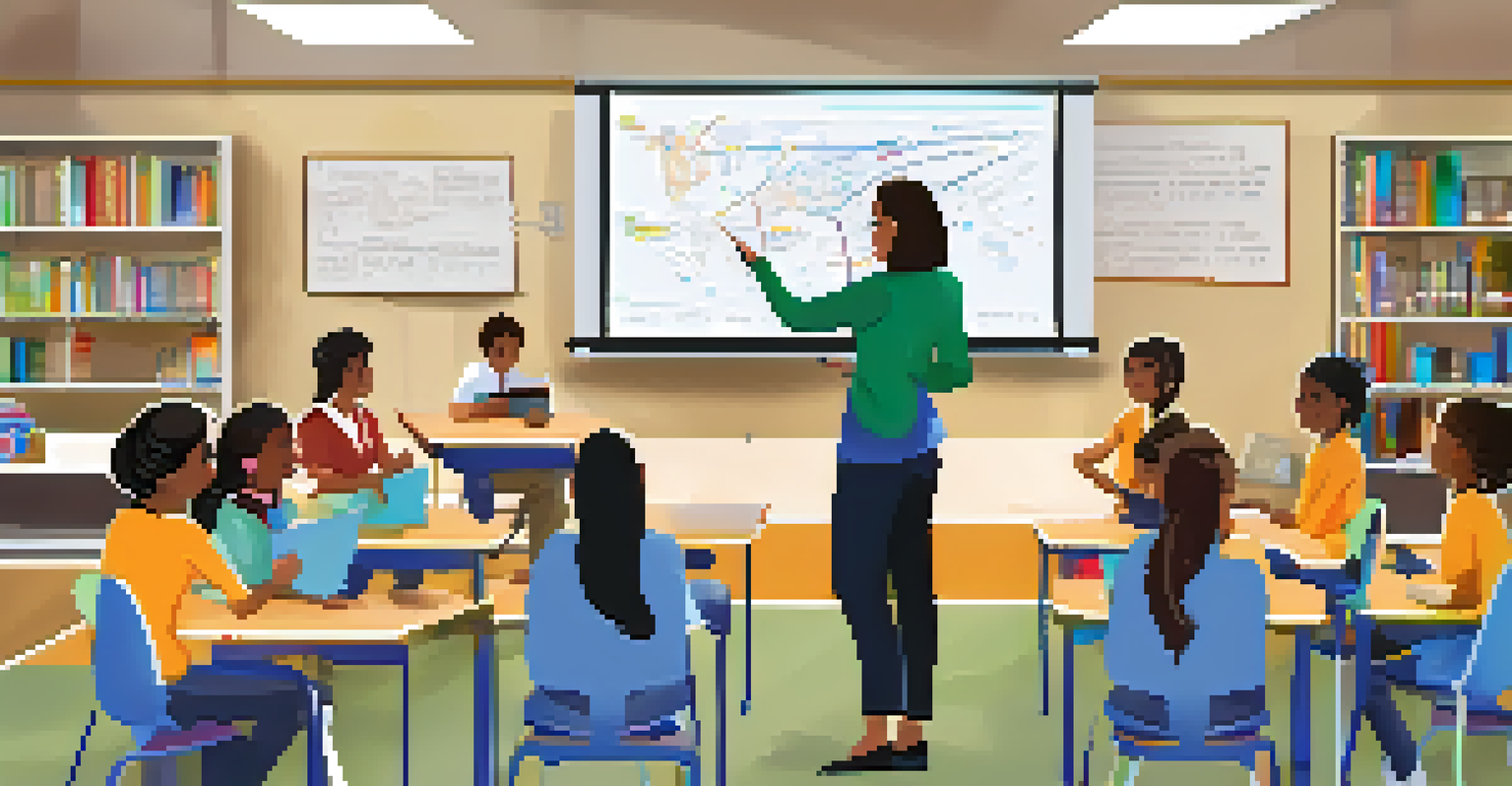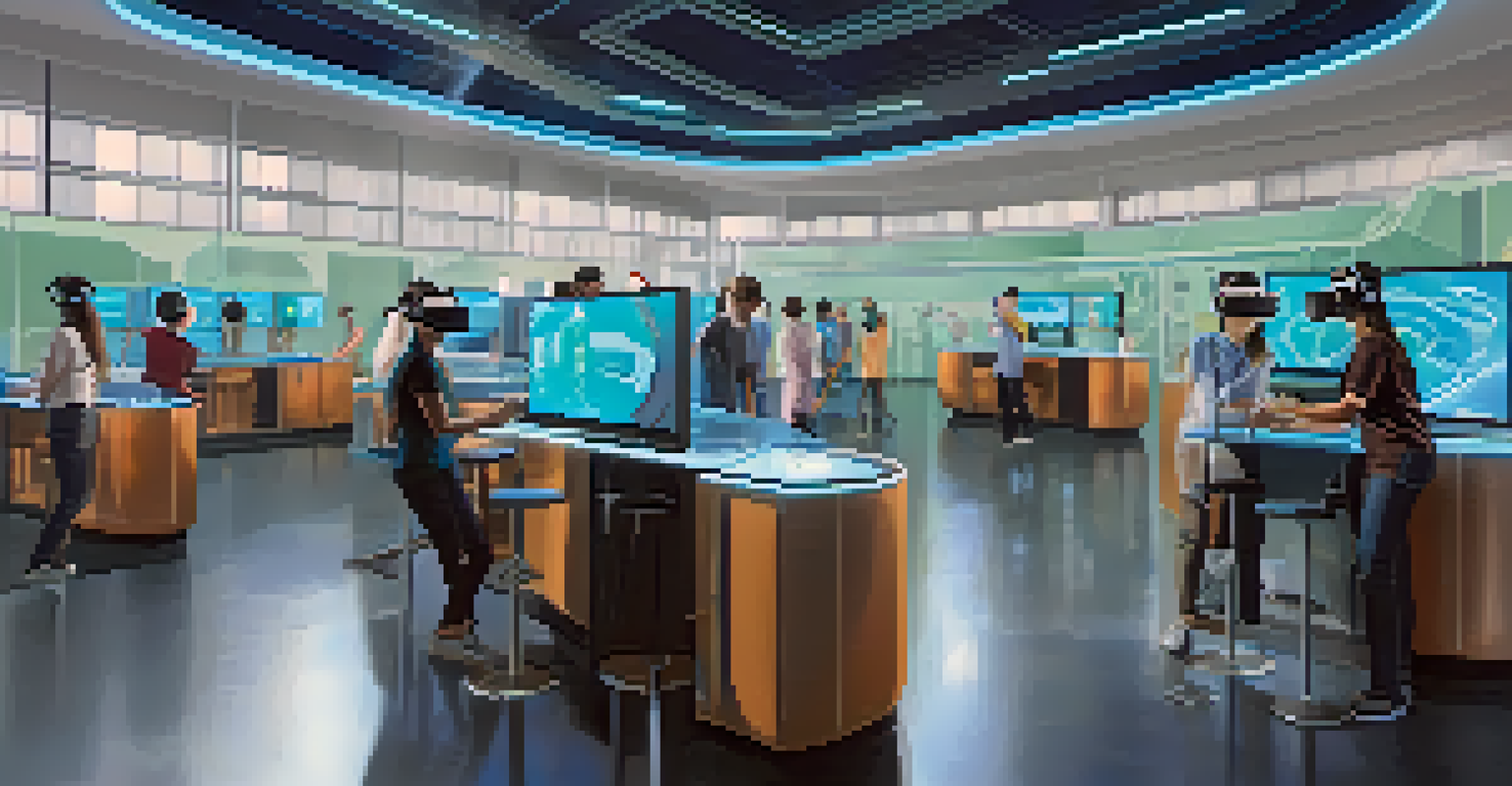Open Educational Resources in STEM: Innovations and Trends

Understanding Open Educational Resources in STEM
Open Educational Resources (OER) are teaching, learning, and research materials that are freely accessible and openly licensed. In the STEM fields—science, technology, engineering, and mathematics—OER can take many forms, including textbooks, simulations, and online courses. These resources aim to enhance education by providing high-quality materials without the financial burden often associated with traditional textbooks.
Open Educational Resources are a powerful tool for democratizing education and ensuring that everyone has access to the knowledge they need to succeed.
The beauty of OER lies in their accessibility; students and educators from various backgrounds can benefit from them regardless of their financial situation. Imagine a budding engineer in a remote area who can access the same high-quality resources as a student in a well-funded urban school. This equitable access is vital for fostering a diverse and innovative STEM workforce.
Moreover, the collaborative nature of OER encourages educators to share their insights and improvements. This collective effort leads to a continuously evolving pool of resources that can adapt to the ever-changing landscape of STEM education.
The Impact of Technology on OER in STEM
Technology plays a crucial role in the development and dissemination of OER, especially in STEM fields. With the rise of digital platforms, educators can create and share interactive content that enhances learning experiences. For instance, simulations and virtual labs allow students to conduct experiments in a safe, controlled environment, making complex concepts more digestible.

Additionally, online collaboration tools enable educators to co-create and improve OER, fostering a sense of community. This collaborative spirit means that resources can be continually updated to reflect current scientific discoveries and technological advancements, keeping the content relevant and engaging for students.
OER Enhances STEM Education Access
Open Educational Resources provide equitable access to high-quality learning materials, benefiting students from diverse financial backgrounds.
As a result, technology not only enhances the quality of OER but also broadens their reach. Students from around the globe can access these materials, leading to a more interconnected and informed community of learners.
Trends Shaping the Future of STEM OER
One of the most notable trends in STEM OER is the increased focus on inclusivity and diversity. Educators and organizations are recognizing the importance of representing various perspectives in STEM. This trend is essential not only for enriching the learning experience but also for inspiring the next generation of scientists and engineers from all walks of life.
The future of education lies in collaboration and sharing, where knowledge is not just owned by a few but available to all.
Another significant trend is the rise of adaptive learning technologies. These tools personalize the educational experience by adjusting content based on individual student performance. As OER incorporate adaptive learning, students can engage with materials that suit their unique learning styles and paces, increasing the likelihood of success.
Furthermore, there is a growing emphasis on open licensing and copyright awareness. Educators are becoming more familiar with Creative Commons licenses, which allow them to use, adapt, and share resources legally and ethically, promoting a culture of sharing and collaboration.
Case Studies: Successful OER Implementations in STEM
Several institutions have successfully implemented OER in their STEM programs, showcasing the potential for positive change. For instance, the University of Massachusetts Amherst developed an open textbook for introductory physics, which has saved students thousands of dollars in textbook costs while improving course engagement and retention rates.
Similarly, the OpenStax initiative has created a suite of openly licensed textbooks for subjects such as physics and biology. These resources are not only affordable but also peer-reviewed, ensuring high-quality content that aligns with educational standards. Many universities have adopted these textbooks, further solidifying the value of OER in STEM education.
Technology Drives OER Development
The rise of digital platforms and collaborative tools enhances the creation and sharing of interactive OER, making STEM education more engaging.
These case studies illustrate that OER can lead to significant improvements in student outcomes and satisfaction, paving the way for more institutions to consider adopting similar approaches in their curricula.
Challenges Facing OER in STEM Education
Despite the numerous benefits of OER, several challenges remain that educators and institutions must address. One major hurdle is the perception that OER lacks quality compared to traditional resources. This misconception can deter educators from fully embracing OER, even when high-quality options are available.
Additionally, the sustainability of OER projects is a concern. Many resources are created by passionate educators and volunteers, but without institutional support, these initiatives can struggle to maintain momentum. Ensuring ongoing funding and resources is essential for the long-term success of OER in STEM.
Finally, there is a need for better training and support for educators who wish to create or adopt OER. Providing professional development opportunities can empower teachers to feel confident in utilizing these resources effectively, ultimately leading to a richer learning experience for their students.
The Role of Educators in Advancing OER in STEM
Educators play a pivotal role in the advancement of OER in STEM. By actively participating in the creation and sharing of these resources, teachers can contribute to a more collaborative learning environment. Their first-hand experiences and insights can help shape OER to better meet the needs of students.
Moreover, educators can serve as advocates for OER within their institutions, championing the cause and encouraging colleagues to explore these resources. By sharing success stories and outcomes from OER implementation, they can inspire others to join the movement towards open education.
Inclusivity Shapes Future OER Trends
A growing focus on inclusivity and adaptive learning technologies is transforming OER, ensuring they meet the diverse needs of all students.
Additionally, educators can collaborate with organizations and platforms that focus on OER development. By working together, they can ensure that OER continues to evolve in a way that is relevant, inclusive, and impactful for all students.
Looking Ahead: The Future of OER in STEM
As we look to the future, the potential for OER in STEM education is vast. With ongoing advancements in technology and a growing commitment to inclusivity, we can expect to see a more dynamic and engaging learning environment. The integration of artificial intelligence and machine learning could further personalize the educational experience, providing tailored resources for each learner.
Moreover, as more educators recognize the value of OER, we may witness a cultural shift towards open education. This change could lead to an increase in collaborative projects, sharing of resources, and a more interconnected global education community. Imagine a world where every student, regardless of their location or financial situation, has access to top-notch STEM resources.

Ultimately, the future of OER in STEM holds great promise. By working together—educators, institutions, and students—we can continue to break down barriers and create a more equitable and innovative education landscape.